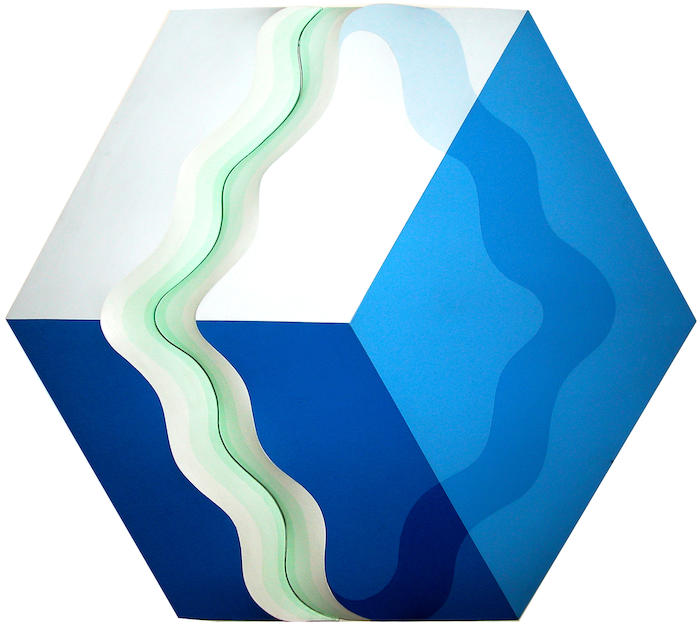Shozo Nagano
Acheron/Cobalt Blue , nd
Artwork Type: Paintings
Medium: Acrylic on canvas
Accession #: 19740435
Credit: Collection of University Art Museum, University at Albany, State University of New York on behalf of The University at Albany Foundation, gift of Shozo Nagano
Related Exhibition:
When We Were Young: Rethinking Abstraction From The University At Albany Art Collections (1967-Present)
Copyright: © Shozo Nagano
Object Label:
Show Object Label(s)In this three-dimensional canvas, three L-shaped sides meet to form the corner of a cube.
The canvas moves in and out of real space, physically widening and tapering. These real
changes in depth are exaggerated by the painted white, gray, and black planes of the L-
shapes, whose arrangement suggests a light source coming from above and left. But where
one would expect the edges of the cube to protrude into the viewer’s space, they suddenly
slope inward, an effect reinforced by the calculated shifts in value in the blue bands running
parallel to the edges. Shozo Nagano’s shaped canvases recall Frank Stella’s Minimalist
paintings, but Nagano incorporates the spatial illusions of Op Art––in particular the use of
isometric perspective, a system of representing three-dimensional space in which, unlike
one-point Renaissance perspective, parallel lines do not converge as they recede. Isometric
drawings lend themselves well to spatial ambiguity, as famously in seen in the ambiguous
figure type of optical illusion known as Schroeder’s staircase.
–When We Were Young: Rethinking Abstraction From The University At Albany Art Collections (1967-Present)
Please contact us at dabbatiello@albany.edu to verify collection holdings and artwork information. If you are interested in receiving a high resolution image of an artwork for educational, scholarly, or publication purposes, please contact us at dabbatiello@albany.edu.
